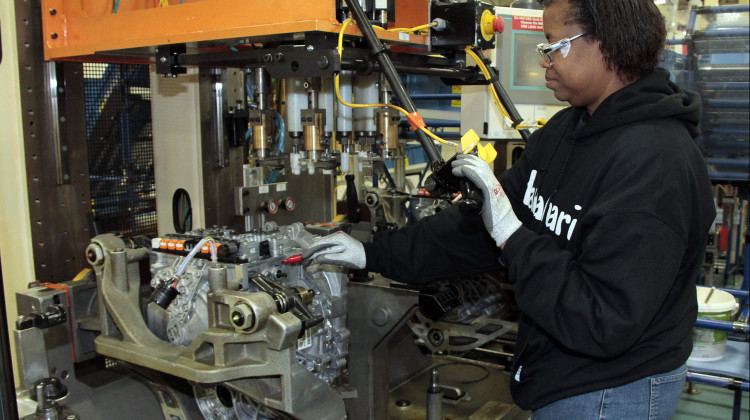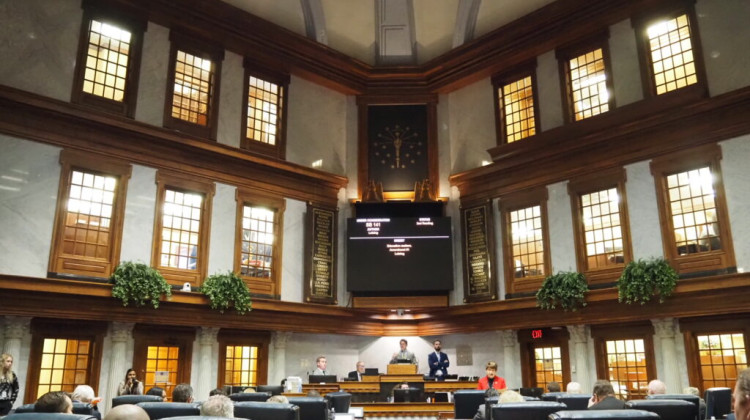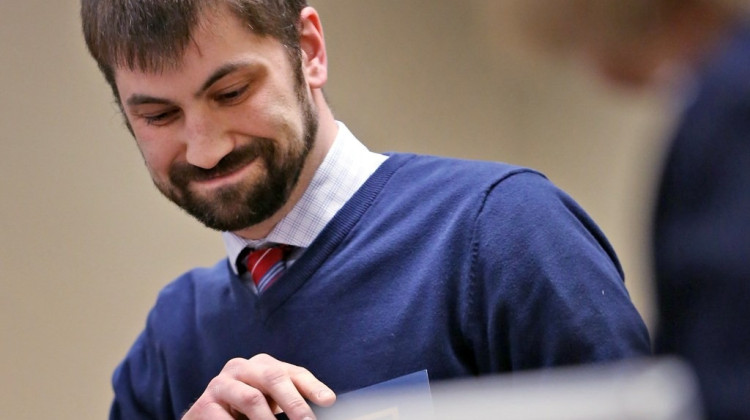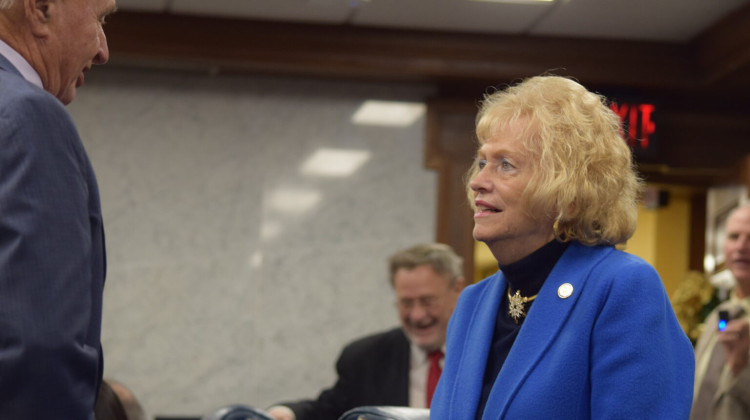
An employee at Stellantis' Indiana Transmission Plant in Kokomo works to produce a nine-speed transmission.
Jerry Mendoza/Courtesy of StellantisKokomo has long been home to several plants that build key components for internal combustion engine cars for brands like Jeep, Dodge and Chrysler.
Now the company that owns those brands, Stellantis, plans to put the city on the “cutting edge” of the electric vehicle (EV) transition. Kokomo will become home to two EV battery plants as the Amsterdam-based automaker aims to make half of all vehicles it sells in the U.S. electric by 2030.
The first battery plant was announced in May 2022 and is expected to begin production by early 2025. The second, announced Wednesday, is slated to begin production by 2027. In total, both plants are expected to employ about 2,800 people with the company investing a combined $6.3 billion in the projects.
Those are the only EV battery plants the company has announced in the U.S. so far. The state has offered about $176.5 million in tax credits, grants and “conditional structured performance payments,” according to the governor's office. The incentives are “performance-based, meaning the company is eligible to claim state benefits once investments are made and employees are hired and trained.” Additional incentives were offered by the city of Kokomo, Howard County and other local agencies.
“The addition of this second battery plant will solidify Kokomo as one of the largest electric vehicle battery producers in North America and shows that Kokomo continues to remain on the cutting edge of advanced automotive manufacturing,” said Kokomo Mayor Tyler Moore in the Stellantis news release.
Both plants will technically be owned by StarPlus Energy, a company formed by a partnership between Stellantis and battery-maker Samsung SDI. Such “joint venture” battery plants are a sore spot for the United Auto Workers union.
The UAW has been pushing Stellantis — as well as Ford and General Motors — to meet certain demands in contract negotiations through a nearly month-long strike campaign at various assembly plants and distribution centers owned by each company.
Join the conversation and sign up for the Indiana Two-Way. Text "Indiana" to 73224. Your comments and questions in response to our weekly text help us find the answers you need on statewide issues.
Several UAW demands seek to ensure a “just” EV transition. The automakers have resisted union and lawmaker demands to make these “joint venture” plants part of the same UAW national contract that covers most of the companies’ current hourly manufacturing workers.
In an emailed statement in September, a spokesperson for Stellantis said “we respect the right of the UAW to organize future hourly employees at our joint venture facilities and believe that those future employees have the right to decide their representational status. The joint venture intends to offer very competitive wages and benefits while making the health and safety of its workforce a top priority.”
GM once said its “joint venture” battery plants, including one being built near South Bend, must be individually unionized and bargained for because they’re technically owned by separate companies.
However, on Friday UAW President Shawn Fain announced a big “win” for the union: GM agreed to reverse its position on the battery plants in a last minute effort to prevent the union from calling its massive Arlington, Texas, assembly plant to go on strike.
“The plan was to draw down the engine and transmission plants and permanently replace them with low wage battery jobs,” said Fain, who grew up in Kokomo and worked at one of the plants now owned by Stellantis there. “We had a different plan. And our plan is winning at GM. And we expect it to win at Ford and Stellantis as well.”
Electric vehicle parts are often less complex than traditional gasoline-fueled vehicles. Transmissions — like the ones made at three of the five existing Stellantis plants in the Kokomo area — are much simpler in an EV, for example.
That simplicity means fewer hours of labor will be needed to build those parts. So as the U.S. federal government pushes automakers to shift to EVs, local and national union leaders worry jobs will be lost.
There are about 3,600 hourly workers across the three Stellantis transmission plants in the Kokomo area, according to the company. In February, the company announced it would invest $155 million across the two largest transmission plants and a casting plant in the same city to produce Electric Drive Modules.
“With the investment, more than 265 jobs will be retained across all three plants,” the company said in a press release.
Adam is our labor and employment reporter. Contact him at arayes@wvpe.org or follow him on Twitter at @arayesIPB.
9(MDAyMzk1MzA4MDE2MjY3OTY1MjM5ZDJjYQ000))
 DONATE
DONATE






 Support WFYI. We can't do it without you.
Support WFYI. We can't do it without you.